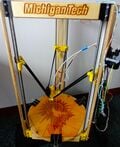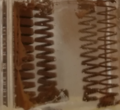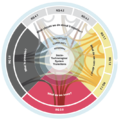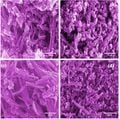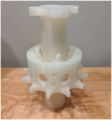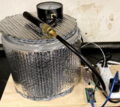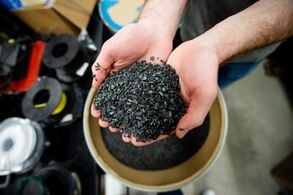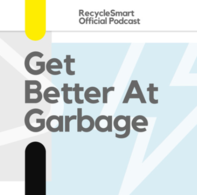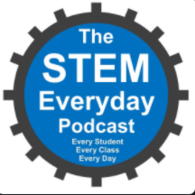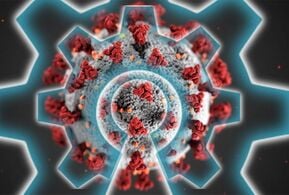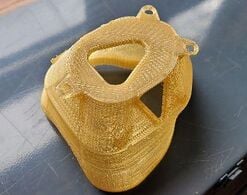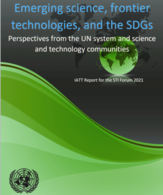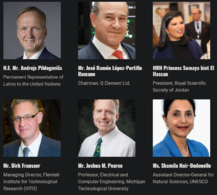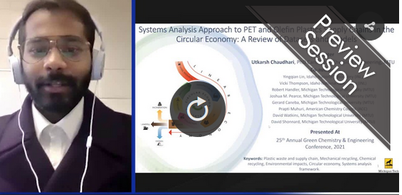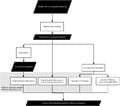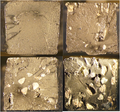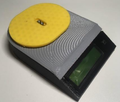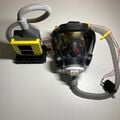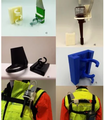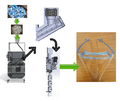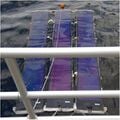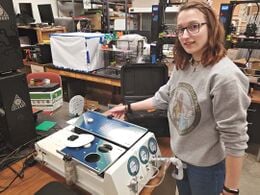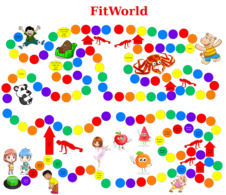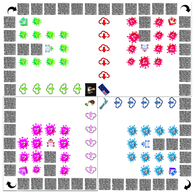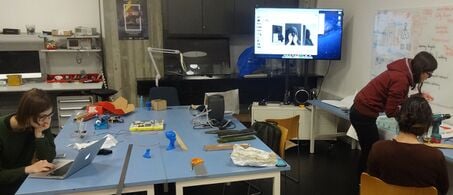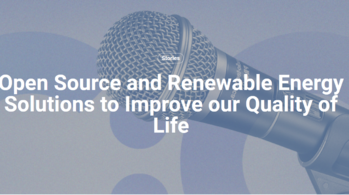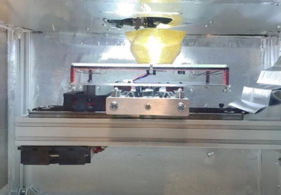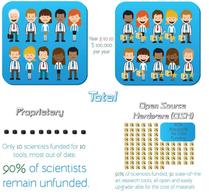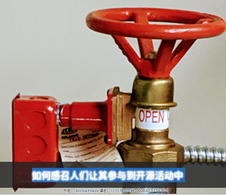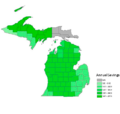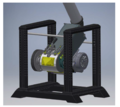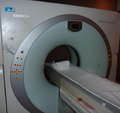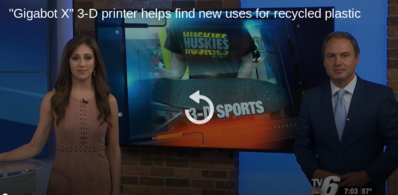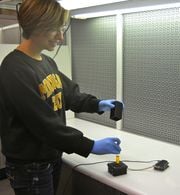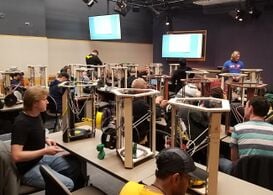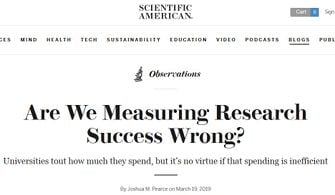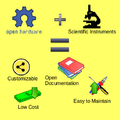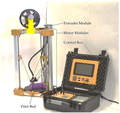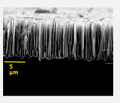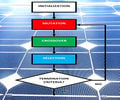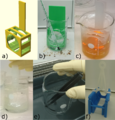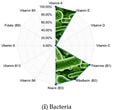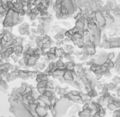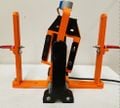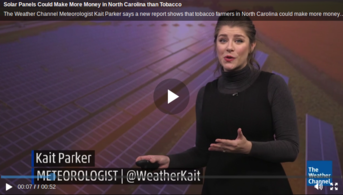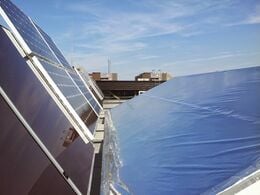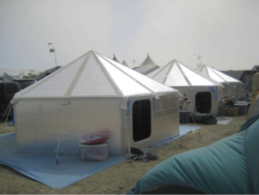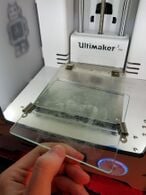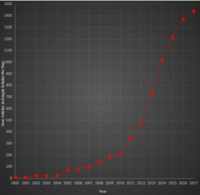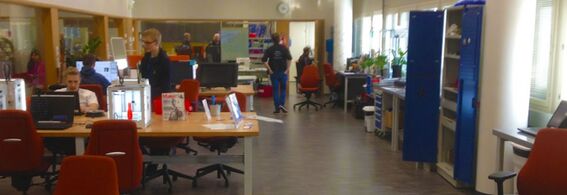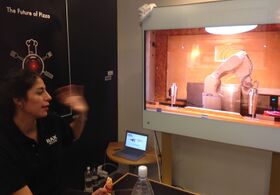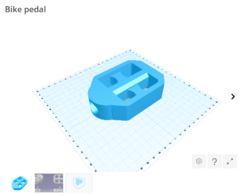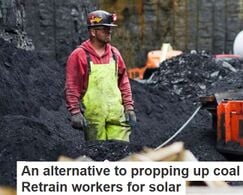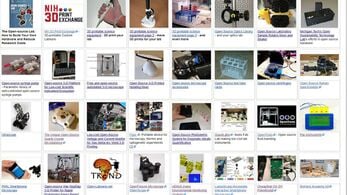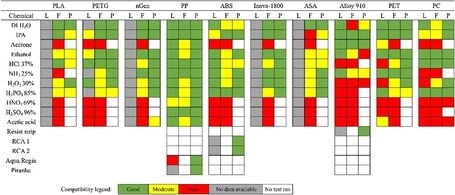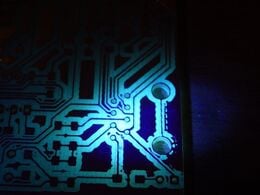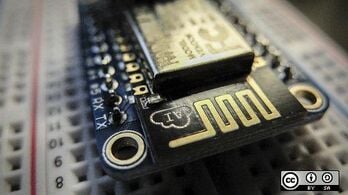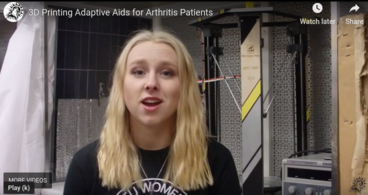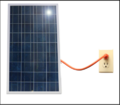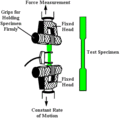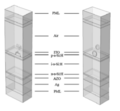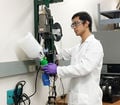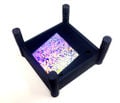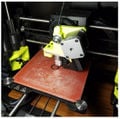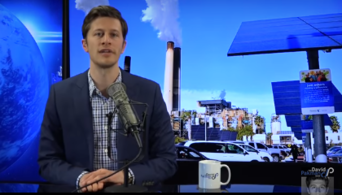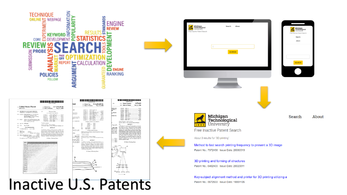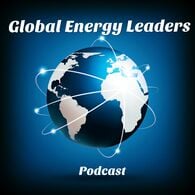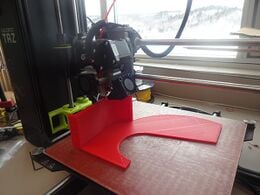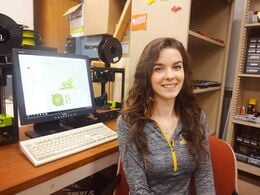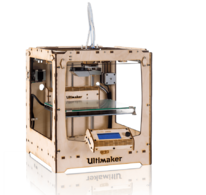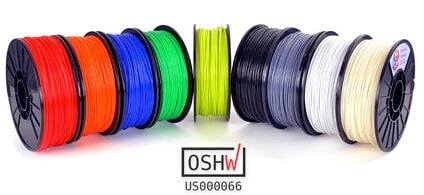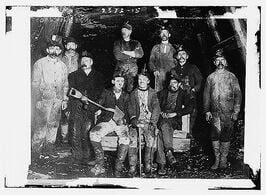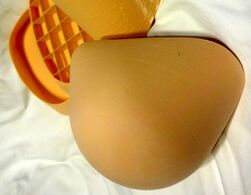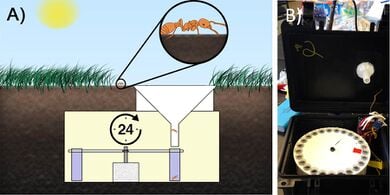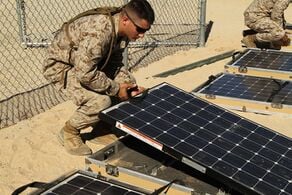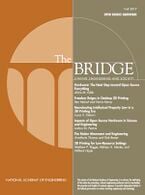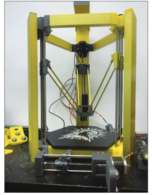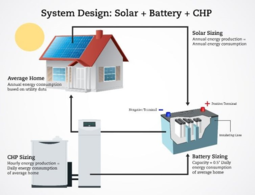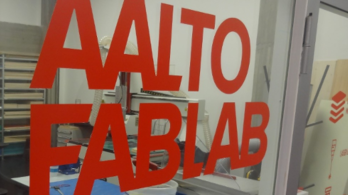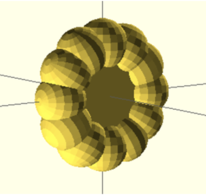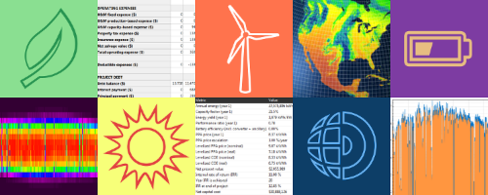J.M.Pearce (talk | contribs) |
J.M.Pearce (talk | contribs) |
||
| (22 intermediate revisions by 5 users not shown) | |||
| Line 1: | Line 1: | ||
{{MOST}} | {{MOST}} | ||
{{TOC|right}} | |||
The '''Pearce Research Group at Michigan Tech in Open Sustainability Technology''' focuses on [[Applied sustainability|open and applied sustainability]], which is the application of science and innovation to ensure a better quality of life for all, now and into the future, in a just and equitable manner, whilst living within the limits of supporting ecosystems. | |||
Specifically we are interested in exploring the way solar [[photovoltaic]] technology can sustainably power our society and how [[open-source hardware]] like [[open source appropriate technologies]] (or OSAT) and [[RepRap]] 3-D printing can drive decentralized local production and manufacturing (and maybe even social change).<ref>Rumpala, Y., 2016. A New Printing Revolution? 3D Printing as an Agent of Socio-Political Change. International Journal of Technoethics (IJT), 7(2), pp.105-123.</ref> See [https://www.lulzbot.com/materials/case_studies/michigan-tech/michigan-tech_3d-printing_case-study_web-ready.pdf Advancing Open, Sustainable Technology with 3D Printing]. | |||
MOST on [https://www.instagram.com/mturesearchmost/ Instagram]. | |||
|} | {{Video|PkY6nFHjwLI}} | ||
{{Pearce publications notice}} | |||
{{Category data}} | |||
==Current Research Projects== | |||
=== Photovoltaic Materials, Electronic Device Physics, and Solar Photovoltaic Systems Projects === | |||
<gallery heights=150px> | |||
File:Pvcash.jpg|Solar photovoltaic (PV) technology provides the lowest cost electricity available in most markets. As installed costs continue to decline, antiquated polluting fossil-fued-based grid electricity prices continue to escalate, PV growth will continue to grow to dominate the energy industry of the future because it simply has a lower levelized cost.<ref>K. Branker, M.J.M. Pathak, J.M. Pearce, '''A Review of Solar Photovoltaic Levelized Cost of Electricity''', ''Renewable and Sustainable Energy Reviews'', '''15''', pp.4470-4482 (2011). [https://dx.doi.org/10.1016/j.rser.2011.07.104 DOI] and [https://mtu.academia.edu/JoshuaPearce/Papers/1540664/A_Review_of_Solar_Photovoltaic_Levelized_Cost_of_Electricity Open access]</ref> | |||
File:MTU MBE Front.JPG|We intend to further reduce the costs by developing an ultra-high efficiency indium gallium nitride (InGaN) [[solar cell]].<ref>D.V.P. McLaughlin & J.M. Pearce, "[https://link.springer.com/article/10.1007%2Fs11661-013-1622-1 Progress in Indium Gallium Nitride Materials for Solar Photovoltaic Energy Conversion]", Metallurgical and Materials Transactions A 44(4) pp. 1947-1954 (2013).</ref> The band gap of InGaN can be tuned from 0.7eV-3.4eV by adjusting the ratio of indium and gallium in the film so a multi-layered cell covers the entire range of the solar spectrum. Thus, a well-designed InGaN solar cell can absorb and convert a much higher fraction of the sun's light energy into electricity. In addition to band gap engineering, PV device performance can be improved by engineering the microstructure of the material to increase the optical path length and provide light trapping. For this purpose, nano-columns are candidates for the ideal microstructure as it has been shown that when their diameters are optimized, resonant behavior is observed. | |||
File:plasmonics cell.png|This project aims to improve efficiencies of commercial solar cells using resonant plasmonic nanostructures. We are using wide-angle, polarization–independent, broadband [[Plasmonic Perfect Meta-Absobers for a-Si PV Devices|plasmonic perfect meta-absorbers]] capable of achieving absorption throughout the entire solar spectrum while reducing semiconductor absorber layer thicknesses, which reduces deposition time, material used, embodied energy, greenhouse gas emissions, and ultimately economic costs. | |||
|- | |||
|- | |||
File: SEARC OTF.jpg|An important factor in decreasing the costs of PV systems is implementing a proper system design which effectively utilizes the modules to their greatest efficiency. Here we are properly accounting for meteorological factors which affect the performance of PV modules, and to suggest best practices for reducing losses and increasing yields for PV systems. See: the [[OSOTF]] or some of our [[Effects of spectral albedo on photovoltaic devices|projects on snow and solar cells]] | |||
</gallery> | |||
| | |||
=== Open Source Distributed Manufacturing === | |||
<gallery heights=170px> | |||
File:Laserw.JPG|[[Open source hardware]] (OSH) consists of physical objects designed and offered in the same manner as [[free and open-source software]] (FOSS). MOST is working on [[open-source scientific hardware]] for [[Open source labs]] using [[Arduino]] microcontrollers and [[RepRaps]] in addition to our standard work in [[OSAT]]. | |||
File:MOST delta2.JPG|We are on the front lines of a [https://www.mtu.edu/research/archives/magazine/2014/stories/3d-revolution/ 3D Revolution] and made Open Source.com's list of "5 favorite 3D printing projects". [https://www.corbettreport.com/interview-1034-joshua-pearce-explains-the-3d-printing-revolution/ Joshua Pearce Explains the 3D Printing Revolution on Japan's Corbett Report] | |||
|Open source 3-D printers ([[RepRap]]s), enable [[Open source 3-D printing of OSAT|3D printing of open source appropriate technologies]], which are easily and economically made from readily available resources by local communities to meet their needs. This project is developing solar powered self-replicating open-source 3-D printers - capable of making primary components of solar photovoltaic systems from recycled waste. The project investigates the technical and economic viability and environmental impact. Here is [https://www.academia.edu/1507915/3-D_Printing_of_Open_Source_Appropriate_Technologies_for_Self-Directed_Sustainable_Development the plan]. How would global society change if everyone had access to abundant low-cost renewable energy via solar electricity, [[Open source 3-D printing of OSAT|open source 3D designs]] and an affordable open source 3-D printer like the [http://reprap.org/wiki/Main_Page RepRap]? | |||
File:Sparks1.jpg|We are further developing our <$2000 [[open-source metal 3-D printer]]. The metal 3-D printer is controlled with an open-source micro-controller and is a combination of a low-cost commercial gas-metal MIG welder and a derivative of the Rostock, a deltabot [[RepRap]]. We provided everything you need to make your own as we are climbing the ladder of sophistication together to give everyone the ability to print useful objects in steel and aluminum. | |||
File:Recyclebot-process.png|A [[RecycleBot]] is a waste plastic extruder - that can take household polymer waste and turn it into valuable 3-D printer feedstock. This project focuses on designing, building and testing an extruder for the RepRap that uses polymer waste as a feedstock. | |||
</gallery> | |||
==[[:Category:MOST completed projects and publications|Completed Projects]]== | |||
{| | *[[:Category:MOST completed projects and publications|Completed Projects for all Years]] | ||
| | {{Excerpt|Category:MOST completed projects and publications|2021 Completed Projects & Publications|card =no}} | ||
| | {{Excerpt|Category:MOST completed projects and publications|2021 Popular Audience Articles|card =no}} | ||
| | {{Excerpt|Category:MOST completed projects and publications|2020 Completed Projects & Publications|card =no}} | ||
| BBC Arabic visits MOST | {{Excerpt|Category:MOST completed projects and publications|2020 Popular Audience Articles|card =no}} | ||
{{Excerpt|Category:MOST completed projects and publications|2019 Completed Projects & Publications|card =no}} | |||
|} | {{Excerpt|Category:MOST completed projects and publications|2019 Popular Audience Articles|card =no}} | ||
{{Excerpt|Category:MOST completed projects and publications|2018 Completed Projects & Publications|card =no}} | |||
{{Excerpt|Category:MOST completed projects and publications|2018 Popular Audience Articles|card =no}} | |||
{{Excerpt|Category:MOST completed projects and publications|2017 Completed Projects & Publications|card =no}} | |||
{{Excerpt|Category:MOST completed projects and publications|2017 Popular Audience Articles|card =no}} | |||
==Videos== | |||
===OS Lulzbot at MOST=== | |||
{{Video|dWU5vvlaq80}} | |||
===OSE tour of MOST lab=== | |||
{{Video|R1CVXm2oNzs}} | |||
{{Video|ampNVImbCUE}} | |||
===The Wild West of Distributed Recycling=== | |||
{{Video|JxF5gunuM1A}} | |||
===Michigan Tech Owning Open Hardware=== | |||
{{Video|oyEo2VHZYY4}} | |||
===Why do we make such a big deal about open source hardware?=== | |||
{{Video|SGJ5cZnoodY}} | |||
===BBC Arabic visits MOST=== | |||
{{Video|eVvCNr3mGrY}} | |||
==Group Links== | ==Group Links== | ||
* [[MOST student useful links]] | |||
* [[MOST tasks]] | *[[MOST student useful links]] | ||
*[[MOST tasks]] | |||
==References== | ==References== | ||
<references/> | |||
[[ | <references /> | ||
[[Category:Michigan Technological University]] | |||
[[Category:Research groups]] | |||
Latest revision as of 14:23, 24 January 2024
The Pearce Research Group at Michigan Tech in Open Sustainability Technology focuses on open and applied sustainability, which is the application of science and innovation to ensure a better quality of life for all, now and into the future, in a just and equitable manner, whilst living within the limits of supporting ecosystems.
Specifically we are interested in exploring the way solar photovoltaic technology can sustainably power our society and how open-source hardware like open source appropriate technologies (or OSAT) and RepRap 3-D printing can drive decentralized local production and manufacturing (and maybe even social change).[1] See Advancing Open, Sustainable Technology with 3D Printing.
MOST on Instagram.
Current Research Projects[edit | edit source]
Photovoltaic Materials, Electronic Device Physics, and Solar Photovoltaic Systems Projects[edit | edit source]
-
Solar photovoltaic (PV) technology provides the lowest cost electricity available in most markets. As installed costs continue to decline, antiquated polluting fossil-fued-based grid electricity prices continue to escalate, PV growth will continue to grow to dominate the energy industry of the future because it simply has a lower levelized cost.[2]
-
We intend to further reduce the costs by developing an ultra-high efficiency indium gallium nitride (InGaN) solar cell.[3] The band gap of InGaN can be tuned from 0.7eV-3.4eV by adjusting the ratio of indium and gallium in the film so a multi-layered cell covers the entire range of the solar spectrum. Thus, a well-designed InGaN solar cell can absorb and convert a much higher fraction of the sun's light energy into electricity. In addition to band gap engineering, PV device performance can be improved by engineering the microstructure of the material to increase the optical path length and provide light trapping. For this purpose, nano-columns are candidates for the ideal microstructure as it has been shown that when their diameters are optimized, resonant behavior is observed.
-
This project aims to improve efficiencies of commercial solar cells using resonant plasmonic nanostructures. We are using wide-angle, polarization–independent, broadband plasmonic perfect meta-absorbers capable of achieving absorption throughout the entire solar spectrum while reducing semiconductor absorber layer thicknesses, which reduces deposition time, material used, embodied energy, greenhouse gas emissions, and ultimately economic costs.
-
An important factor in decreasing the costs of PV systems is implementing a proper system design which effectively utilizes the modules to their greatest efficiency. Here we are properly accounting for meteorological factors which affect the performance of PV modules, and to suggest best practices for reducing losses and increasing yields for PV systems. See: the OSOTF or some of our projects on snow and solar cells
Open Source Distributed Manufacturing[edit | edit source]
-
Open source hardware (OSH) consists of physical objects designed and offered in the same manner as free and open-source software (FOSS). MOST is working on open-source scientific hardware for Open source labs using Arduino microcontrollers and RepRaps in addition to our standard work in OSAT.
-
We are on the front lines of a 3D Revolution and made Open Source.com's list of "5 favorite 3D printing projects". Joshua Pearce Explains the 3D Printing Revolution on Japan's Corbett Report
-
We are further developing our <$2000 open-source metal 3-D printer. The metal 3-D printer is controlled with an open-source micro-controller and is a combination of a low-cost commercial gas-metal MIG welder and a derivative of the Rostock, a deltabot RepRap. We provided everything you need to make your own as we are climbing the ladder of sophistication together to give everyone the ability to print useful objects in steel and aluminum.
-
A RecycleBot is a waste plastic extruder - that can take household polymer waste and turn it into valuable 3-D printer feedstock. This project focuses on designing, building and testing an extruder for the RepRap that uses polymer waste as a feedstock.
Completed Projects[edit | edit source]
Videos[edit | edit source]
OS Lulzbot at MOST[edit | edit source]
OSE tour of MOST lab[edit | edit source]
The Wild West of Distributed Recycling[edit | edit source]
Michigan Tech Owning Open Hardware[edit | edit source]
Why do we make such a big deal about open source hardware?[edit | edit source]
BBC Arabic visits MOST[edit | edit source]
Group Links[edit | edit source]
References[edit | edit source]
- ↑ Rumpala, Y., 2016. A New Printing Revolution? 3D Printing as an Agent of Socio-Political Change. International Journal of Technoethics (IJT), 7(2), pp.105-123.
- ↑ K. Branker, M.J.M. Pathak, J.M. Pearce, A Review of Solar Photovoltaic Levelized Cost of Electricity, Renewable and Sustainable Energy Reviews, 15, pp.4470-4482 (2011). DOI and Open access
- ↑ D.V.P. McLaughlin & J.M. Pearce, "Progress in Indium Gallium Nitride Materials for Solar Photovoltaic Energy Conversion", Metallurgical and Materials Transactions A 44(4) pp. 1947-1954 (2013).
Subcategories
This category has the following 22 subcategories, out of 22 total.
J
- Jephias Gwamuri Thesis (11)
M
- MOST backpack delta (5)
- MOST Delta Build (27)
- MOST literature reviews (302)
- MOST news (4)
- MOST RepRap build (20)
- MOST RepRap methods (24)
- MOST users (65)
O
- Open source optics (64)
- OSAT 3D-Printable Designs (346)
P
- Pearce publications (13)
Pages in category "MOST"
The following 200 pages are in this category, out of 1,240 total.
(previous page) (next page)3
- 3-D print warping literature review:MOST
- 3-D printed weld bead geometry characterization
- 3-D printed weld bead geometry characterization/id
- 3-D printer tent
- 3-D printing of electrically conductive materials literature review
- 3-D printing of solar photovoltaic materials
- 3D Metal Printing P V Curve Literature Review
- 3D Metal Printing Slicer Plugin
- 3D Metal Printing Slicer Plugin/cs
- 3D Metal Printing Slicer Plugin/ru
- 3D printable OSAT gallery
- 3D printable OSAT gallery/zh
- 3D printable Polymer Pelletizer Chopper for Fused Granular Fabrication-Based Additive Manufacturing
- 3D printable Polymer Pelletizer Chopper for Fused Granular Fabrication-Based Additive Manufacturing/ar
- 3D printable Polymer Pelletizer Chopper for Fused Granular Fabrication-Based Additive Manufacturing/es
- 3D printable Polymer Pelletizer Chopper for Fused Granular Fabrication-Based Additive Manufacturing/fr
- 3D printable Polymer Pelletizer Chopper for Fused Granular Fabrication-Based Additive Manufacturing/ru
- 3D printable PV components literature review
- 3D printable PV components literature review/The Replicating Rapid Prototyper
- 3D printable science equipment
- 3D printable science equipment page 2
- 3D printable science equipment page 2/es
- 3D printable science equipment page 2/it
- 3D printable science equipment page 2/zh
- 3D printable science equipment page 3
- 3D printable science equipment page 3/es
- 3D printable science equipment page 3/zh
- 3D printable science equipment/es
- 3D printable science equipment/pl
- 3D printable science equipment/pt
- 3D printable science equipment/zh
- 3D printed click-MUAC bands
- 3D printed click-MUAC bands/zh
- 3D printed dual axis gimbal system
- 3D printed dual axis gimbal system/ru
- 3D printed magnetic nanoparticle soft actuator
- 3D printed magnetic soft magnetic helical coil actuators of iron oxide embedded polydimethylsiloxane
- 3D Printed Micromanipulator
- 3D printed photovoltaic module spacer
- 3D printed Polymer Derived Ceramics
- 3d Printed Polypropylene Sealing For Vacuum Applications Lit Review
- 3D printed solar photovoltaic racking
- 3D printed solar photovoltaic racking/de
- 3D printed solar photovoltaic racking/zh
- 3D printer bed adhesion:MOST
- 3D printers education
- 3D printers for peace contest
- 3D Printing Basics:MOST
- 3D printing concrete
- 3d printing error detection
- 3D Printing Failure Database
- 3D Printing Failure Database/zh
- 3d printing safety
A
- A Case for Weakening Patent Rights
- A First Investigation of Agriculture Sector Perspectives on the Opportunities and Barriers for Agrivoltaics
- A National Pragmatic Safety Limit for Nuclear Weapon Quantities
- A new method of preparing highly conductive ultra-thin indium tin oxide for plasmonic-enhanced thin film solar photovoltaic devices
- A new method to determine the effects of hydrodynamic surface coatings on the snow shedding effectiveness of solar photovoltaic modules
- A new model for enabling innovation in appropriate technology for sustainable development
- A novel approach to obviousness: An algorithm for identifying prior art concerning 3-D printing materials
- A novel synthesis of tin oxide thin films by the sol-gel process for optoelectronic applications
- A Review of Greenhouse Gas Emission Liabilities as the Value of Renewable Energy for Mitigating Lawsuits for Climate Change Related Damages
- A review of open source ventilators for COVID-19 and future pandemics
- A review of technical requirements for plug-and-play solar photovoltaic microinverter systems in the United States
- A review of the value of solar methodology with a case study of the U.S. VOS
- A Virtual Educational Exchange: A North-South Virtually-Shared Class on Sustainable Development
- ABS recycling for 3-D printer filament
- Additively Manufactured Parametric Universal Clip-System: An Open Source Approach for Aiding Personal Exposure Measurement in the Breathing Zone
- Additively Manufactured Parametric Universal Clip-System: An Open Source Approach for Aiding Personal Exposure Measurement in the Breathing Zone/th
- Advances in plasmonic light trapping in thin-film solar photovoltaic devices
- Agrivoltaic bifacial vertical PV literature review
- Agrivoltaic potential on grape farms in India
- Agrivoltaics and zoning tax break
- Aligning executive incentives with global public health goals
- Alternative Foods as a Solution to Global Food Supply Catastrophes
- Alternative Foods as a Solution to Global Food Supply Catastrophes/es
- Alternative Foods as a Solution to Global Food Supply Catastrophes/zh
- Aluminum Iron Intermetallics
- Aluminum substrate cleaning for 3-D printing:MOST
- Aluminum substrate cleaning for 3-D printing:MOST/zh
- User:Alwoern
- Ambiance-dependent Agglomeration and Surface-enhanced Raman Spectroscopy Response of Self-assembled Silver Nano-particles for Plasmonic Photovoltaic Devices
- Amorphous silicon degradation literature review
- Amorphous silicon degradation literature review/Hydrogen collision model of light-induced metastability
- Amorphous silicon PVT
- Amorphous silicon PVT/zh
- Analytical Model for the Optical Functions of Indium Gallium Nitride with Application to Thin Film Solar Photovoltaic Cells
- Angle of Repose Analysis
- Anisotropic FFF Material Properties lit review
- Anisotropic mechanical property variance between ASTM D638-14 type I and type IV fused filament fabricated specimens
- Antibacterial and anticancer activity of hydrothermally-synthesized zinc oxide nanomaterials using natural extracts of neem, pepper and turmeric as solvent media
- Applications of Open Source 3-D Printing on Small Farms
- Applications of Open Source 3-D Printing on Small Farms/fr
- Applications of Open Source GMAW-Based Metal 3-D Printing
- Applications of Open Source GMAW-Based Metal 3-D Printing/fr
- Applications of Open Source GMAW-Based Metal 3-D Printing/zh
- Applying a Relationally and Socially Embedded Decision Framework to Solar Photovoltaic Adoption: A Conceptual Exploration
- Approaches to Open Source 3-D Printable Probe Positioners and Micromanipulators for Probe Stations
- Approaches to Open Source 3-D Printable Probe Positioners and Micromanipulators for Probe Stations/ru
- Appropriate technology graduate thesis literature review
- Appropriate technology graduate thesis literature review/th
- Aquavoltaics: Synergies for dual use of water area for solar photovoltaic electricity generation and aquaculture
- Aquavoltaics: Synergies for dual use of water area for solar photovoltaic electricity generation and aquaculture/vi
- Arduino installation
- Arduino use: MOST
- Artificial lung method MOST
- ASA Literature Review
- Assembling Delta Effector:MOST
- Assembling Delta Tie Rods:MOST
- Assembling Delta:MOST
- Assembling PlanetaryGearbox:MOST
- Atomic Force Microscopy(AFM) Protocol : MOST
- Atomic layer deposited aluminium oxide mitigates outgassing from fused filament fabrication–based 3-D printed components
- Atomic layer deposition literature review
- Atomic layer deposition:MOST
- Auto pipette and Liquid handler literature review
- Auto pipette and Liquid handler literature review/zh
- Auto-Clearance Adjustable Triple Hotend Effector
- Automated microscope stage literature review
- Automated quantification of solar photovoltaic potential in cities
B
- Backgrounder:MOST
- Backpack Delta
- Backpack Delta BOM
- Backpack Delta: Building the Lower Platform
- Backpack Delta: Building the Towers
- Backpack Delta: Building the Upper Platform
- Bandgap engineering of multijunction photovoltaic cells for spectral albedo of natural surfaces
- Bandgap engineering of multijunction photovoltaic cells for spectral albedo of natural surfaces/The rating of photovoltaic performance
- Barriers to Appropriate Technology Growth in Sustainable Development
- Beaglebone:MOST
- Belt-Driven Open Source Circuit Mill Using Low-Cost 3-D Printer Components
- Belt-Driven Open Source Circuit Mill Using Low-Cost 3-D Printer Components/es
- Benefits of photovoltaic energy conversion for Michigan
- Bike Pedal Example of Methodology for 3D-Printed Part Design
- Biofuel vs PV literature review
- Biofuel vs PV literature review/Ethanol Industry and process descriptions
- BioPROTEIN
- BioPROTEIN/zh
- Bioreflector method
- Blender animation protocol:MOST
- Blind Person's Assistant/ar
- Blind Person's Assistant/es
- Bridging the Social and Environmental Dimensions of Global Sustainability in STEM Education with Additive Manufacturing
- Building Open Source Hardware in Academia
- Building research equipment with free, open-source hardware
- Building research equipment with free, open-source hardware/es
- Building research equipment with free, open-source hardware/ru
C
- Calibrated light source:MOST
- Characteristics of self-assembled ultrathin Nafion films
- Characterizing GaN:MOST
- Chemical Compatibility of Fused Filament Fabrication-based 3-D Printed Components with Solutions Commonly Used in Semiconductor Wet Processing
- Chemical Synthesis and Characterization of Nano Alumina, Nano Composite of Carbon–Alumina and Their Comparative Studies
- Chemtool(How to draw chemistry):MOST
- User:Chenlong
- Chenlong Nanobeads Project
- Choice of crystal plane for InGaN opto-electonics applications
- CNC Router Parts metal 3D printer
- CNC Router Parts-based metal printers SOP
- Coal with Carbon Capture and Sequestration is not as Land Use Efficient as Solar Photovoltaic Technology for Climate Neutral Electricity Production
- Community solar literature review
- Compact Open Source Automated Monochromator
- Comparative Life Cycle Analysis of Monocrystalline and Multicrystalline Silicon Solar Cells
- Comparative Life Cycle Analysis of Monocrystalline and Multicrystalline Silicon Solar Cells/Kumar, Economic Assessment of Photovoltaic Energy Production Prospects in India Procedia Earth and Planetary Science 2015
- Compatibility of 3-D printed devices in cleanroom environments for semiconductor processing
- Compatibility of 3-D printed devices in cleanroom environments for semiconductor processing/it
- Computer vision and macine learning background
- Computer vision based real-time 3D printing analysis
- Computer vision based real-time 3D printing analysis/2010-2000
- Computer vision based real-time 3D printing analysis/2014
- Computer vision based real-time 3D printing analysis/Literature Review
- Conceptual Design and Rationale for a New Agrivoltaics Concept: Pasture-Raised Rabbits and Solar Farming
- Contact angle measurement on coated glass
- Contact angle with cell phone
- Contact angle with cell phone/ru
- Control strategies for melting snow on PV modules
- Controlling optical absorption in metamaterial absorbers for plasmonic solar cells
- Conversion of Self-Contained Breathing Apparatus Mask to Open Source Powered Air-Purifying Particulate Respirator for Fire Fighter COVID-19 Response
- Converting 2D images to 3D for printing using open source software
- Converting 2D images to 3D for printing using open source software/ro
- Converting 2D images to 3D for printing using open source software/zh
- Converting stl files to dualstrusions
- Corn sheller
- Corn sheller/cs
- Corn sheller/fr
- Cost-effectiveness of interventions for alternate food in the United States to address agricultural catastrophes
- Cost-effectiveness of interventions for alternate food in the United States to address agricultural catastrophes/zh
- Cost-Effectiveness of Interventions for Alternate Food to Address Agricultural Catastrophes Globally
- Could 79 People Solarize the U.S. Electric Grid?
- Create, Share, and Save Money Using Open-Source Projects
- Create, Share, and Save Money Using Open-Source Projects/fr
- Create, Share, and Save Money Using Open-Source Projects/ru
- Creating Syringe Printer using a Lulzbot Mini
- Curve fitting to a set of data
- Curve fitting to a set of data/cs
- Código abierto Impresora 3-D para Metales
- Código abierto Impresora 3-D para Metales/fr
- Código abierto Impresora 3-D para Metales/pt
D
Media in category "MOST"
The following 19 files are in this category, out of 19 total.
-
2012 case for OSAT.pdf 1,239 × 1,752, 9 pages; 306 KB
-
LED-vs-incan in Houghton.ods ; 31 KB
-
MOST HSPrusa extruder 41.jpg 453 × 640; 232 KB
-
MOST HSPrusa extruder 42.jpg 640 × 480; 260 KB
-
MOST HSPrusa extruder 43.jpg 640 × 480; 329 KB
-
MOST HSPrusa extruder 44.jpg 640 × 439; 326 KB
-
MOST HSPrusa y-carriage 22.jpg 640 × 480; 211 KB
-
MOST pump01.png 980 × 683; 97 KB
-
MOST pump02.png 980 × 683; 93 KB
-
MOST pump03.png 980 × 683; 99 KB
-
MOST pump04.png 980 × 683; 96 KB
-
MOST pump05.png 980 × 683; 93 KB
-
MOST pump06.png 980 × 683; 93 KB
-
MOST pump07.png 980 × 683; 101 KB
-
MOST pump08.png 980 × 683; 113 KB
-
MOST pump09.png 980 × 683; 106 KB
-
MTU-Plastic Bank Internships.pdf 1,275 × 1,650, 2 pages; 494 KB
-
Pearce-pubs-3.png 307 × 135; 102 KB
-
Recyclebot.gif 600 × 238; 3.01 MB







![Solar photovoltaic (PV) technology provides the lowest cost electricity available in most markets. As installed costs continue to decline, antiquated polluting fossil-fued-based grid electricity prices continue to escalate, PV growth will continue to grow to dominate the energy industry of the future because it simply has a lower levelized cost.[2]](/w/images/thumb/d/de/Pvcash.jpg/120px-Pvcash.jpg)
![We intend to further reduce the costs by developing an ultra-high efficiency indium gallium nitride (InGaN) solar cell.[3] The band gap of InGaN can be tuned from 0.7eV-3.4eV by adjusting the ratio of indium and gallium in the film so a multi-layered cell covers the entire range of the solar spectrum. Thus, a well-designed InGaN solar cell can absorb and convert a much higher fraction of the sun's light energy into electricity. In addition to band gap engineering, PV device performance can be improved by engineering the microstructure of the material to increase the optical path length and provide light trapping. For this purpose, nano-columns are candidates for the ideal microstructure as it has been shown that when their diameters are optimized, resonant behavior is observed.](/w/images/thumb/5/50/MTU_MBE_Front.JPG/120px-MTU_MBE_Front.JPG)



